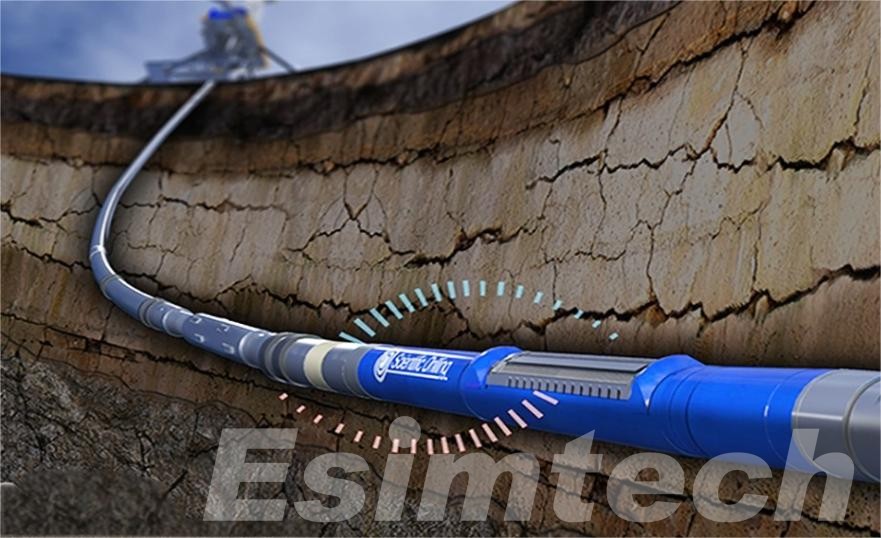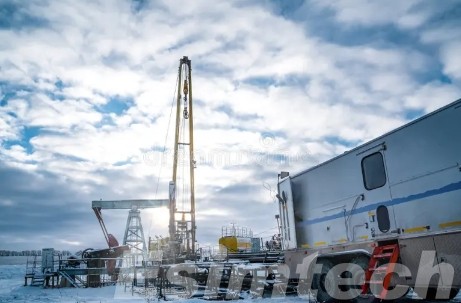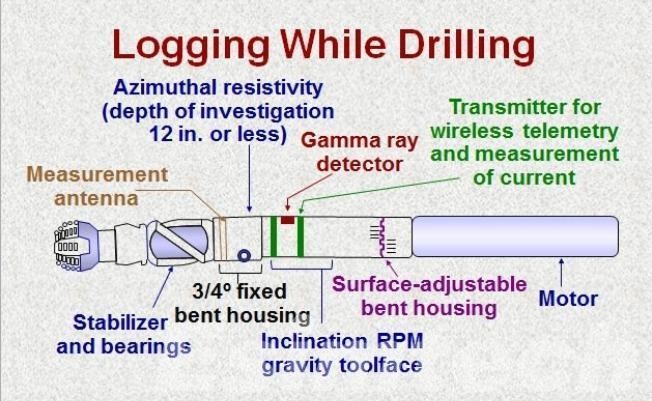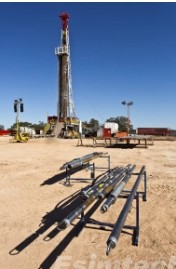Logging While Drilling and Wireline Logging – A Comparative Analysis
In the world of subsurface exploration and resource extraction, accurate data about geological formations is important. Logging While Drilling and Wireline Logging are two primary techniques used to gather this information. Each method has its own set of advantages, applications, and limitations. This blog provides a comparative overview of these two logging techniques, helping you understand their core differences and practical applications.
What is Logging While Drilling

Logging While Drilling (LWD) is an advanced technique used to acquire real-time data about the subsurface while drilling operations are actively taking place. This method integrates specialized logging tools directly into the drill string, allowing for continuous measurement of geological and formation properties as the drill bit penetrates various rock layers.
LWD provides several critical benefits:
- Real-Time Data Acquisition: Unlike traditional methods that collect data post-drilling, LWD delivers immediate insights into formation conditions. This real-time data enables operators to make informed decisions on-the-fly, optimizing drilling parameters and enhancing operational efficiency.
- Tool Integration: By embedding logging instruments within the drill string, LWD minimizes the need for additional trips into the wellbore for data collection. This integration not only saves time but also reduces the risk of wellbore damage and operational delays.
- Dynamic Adaptation: The ability to receive and analyze data in real-time allows for quick adjustments to drilling techniques, helping to address issues such as formation instability or unexpected geological conditions as they arise.
Overall, LWD is particularly valuable in complex drilling scenarios, such as high-pressure or high-temperature wells, where real-time feedback can significantly improve safety and efficiency.
What is Wireline Logging

Wireline Logging is a method used to gather detailed geological and formation data by lowering specialized logging tools into a wellbore on a wireline cable. This technique is typically employed either after drilling operations are completed or during pauses in the drilling process. Wireline Logging provides a comprehensive evaluation of the wellbore and surrounding formations, offering high-resolution data crucial for subsurface analysis.
Key aspects of Wireline Logging include:
- Detailed Measurements: The wireline tools can be customized to measure various properties such as formation resistivity, porosity, density, and sonic velocities. This allows for a thorough analysis of the rock and fluid properties in the formation.
- High-Resolution Data: The tools used in wireline logging are capable of providing very precise and detailed measurements. This high resolution is beneficial for accurate reservoir characterization and assessment.
- Tool Flexibility: Wireline systems are highly flexible, with the capability to switch tools and adjust settings depending on the specific requirements of the logging job. This adaptability is particularly useful for addressing diverse geological conditions and logging objectives.
Overall, Wireline Logging is essential for in-depth well evaluation, providing valuable data for optimizing drilling and production strategies and improving overall reservoir management.
Core Difference between Logging While Drilling and Wireline Logging
Logging While Drilling (LWD) and Wireline Logging are both critical for obtaining subsurface data, but they differ in several key aspects, each influencing their suitability for different applications. Here’s a closer look at their core differences:
Timing of Data Collection
LWD: This technique collects data in real-time as drilling progresses. The integration of logging tools into the drill string allows for continuous monitoring and immediate feedback. This real-time capability enables operators to make instant adjustments to drilling parameters, potentially reducing risks and optimizing drilling performance.
Wireline Logging: Data collection occurs after the drilling process is complete or during breaks in drilling. The tools are lowered into the wellbore on a wireline, providing a snapshot of formation properties at a specific point in time. This approach allows for a more thorough and detailed evaluation but does not provide the immediate feedback that LWD offers.
Tool Placement and Integration
LWD: Tools are housed within the drill string, which can limit the variety of measurements that can be performed simultaneously. The integration of logging tools within the drill string simplifies operations and reduces the need for additional trips into the well, but it may restrict the types of data that can be gathered in one pass.
Wireline Logging: The tools are conveyed into the wellbore on a wireline cable, which allows for a broader range of measurements and greater flexibility. Wireline tools can be interchanged or recalibrated to suit specific logging requirements, providing a more comprehensive dataset and the ability to perform detailed analyses.

Operational Efficiency
LWD: Enhances drilling efficiency by combining data collection with the drilling process. This method reduces the need for additional wellbore entry trips, minimizing downtime and operational costs. By avoiding interruptions to drilling, LWD contributes to a more streamlined and cost-effective operation.
Wireline Logging: Requires separate trips into the well, leading to potential increases in non-productive time and operational costs. Each logging run involves additional time and resources, which can affect overall drilling efficiency and project timelines.
Data Resolution and Range
LWD: Provides valuable data with a focus on key formation properties necessary for real-time decision-making. While the resolution is adequate for many applications, it may not be as detailed as what can be obtained through wireline logging.
Wireline Logging: Offers high-resolution data and a wider range of measurements, allowing for in-depth analysis of formation properties. The high precision of wireline tools is advantageous for detailed reservoir characterization and in-depth geological studies.
In summary, Logging While Drilling and Wireline Logging each have unique strengths and limitations. LWD excels in real-time data collection and operational efficiency, while Wireline Logging offers high-resolution data and flexibility for detailed analysis. Understanding these core differences helps in selecting the appropriate logging technique based on the specific needs and goals of a drilling project.
Practical Application of Logging While Drilling and Wireline Logging
Both Logging While Drilling (LWD) and Wireline Logging are indispensable in the field of subsurface exploration and resource extraction, each serving distinct purposes based on operational needs and project objectives. Here’s a deeper look at their practical applications:
Application of Logging While Drilling (LWD)

- Real-Time Monitoring and Decision Making:
LWD is particularly valuable in dynamic drilling environments where real-time data is crucial for immediate decision-making. For example, in challenging wells with high-pressure or high-temperature conditions, LWD provides continuous feedback on formation properties, allowing engineers to adjust drilling parameters on-the-fly to avoid potential hazards and optimize performance.
- Efficient Drilling Operations:
By integrating data collection with the drilling process, LWD minimizes the need for additional wellbore entry trips. This integration reduces non-productive time (NPT) and operational costs, making LWD ideal for environments where time and cost efficiency are critical. It also helps in optimizing the drilling trajectory and well placement, enhancing the overall efficiency of the drilling operation.
- Hydrocarbon Exploration and Production:
LWD is extensively used for detecting hydrocarbon zones while drilling. Immediate data on formation resistivity and other key parameters helps in identifying productive zones and making timely decisions about well completion and production strategies.
Application of Wireline Logging

- Detailed Formation Evaluation:
Wireline Logging excels in providing high-resolution and detailed data after the drilling process is complete. It is particularly useful for comprehensive reservoir characterization, where precise measurements of rock and fluid properties are essential. This includes detailed assessments of porosity, permeability, and formation fluid content.
- Post-Drilling Assessment:
After drilling operations, Wireline Logging offers a thorough evaluation of the wellbore and surrounding formations. This is crucial for understanding the full extent of the reservoir and planning subsequent development or production strategies. It is also used to calibrate and validate the real-time data obtained from LWD.
- Reservoir Management:
Wireline Logging provides data that supports long-term reservoir management and optimization. Detailed analyses from wireline logs help in making informed decisions about reservoir simulation, enhanced oil recovery techniques, and production optimization strategies.
In summary, while LWD is tailored for real-time data acquisition and operational efficiency during drilling, Wireline Logging offers in-depth analysis and high-resolution data post-drilling. Leveraging both methods appropriately ensures a comprehensive understanding of subsurface conditions, leading to more effective exploration and production strategies.
A Way to Best Implement Well Logging: Simulation Tool
To optimize the use of both Logging While Drilling and Wireline Logging, simulation tools can play a crucial role. These tools allow engineers and geologists to model and simulate various logging scenarios, helping to predict the performance of different logging techniques under specific conditions.
Benefits of using simulation tools include:
- Enhanced Decision-Making: Provides a platform for evaluating different logging strategies and choosing the most effective approach.
- Cost Efficiency: Helps in planning and budgeting by predicting the outcomes and potential challenges of logging operations.
- Risk Mitigation: Identifies potential issues and challenges before actual implementation, reducing the risk of costly errors and operational delays.
In conclusion, both Logging While Drilling and Wireline Logging offer insights into subsurface formations, each with its unique advantages. By understanding their core differences and practical applications, and leveraging simulation tools, operators can make informed decisions and optimize their well-logging strategies for better efficiency and accuracy in resource extraction.

